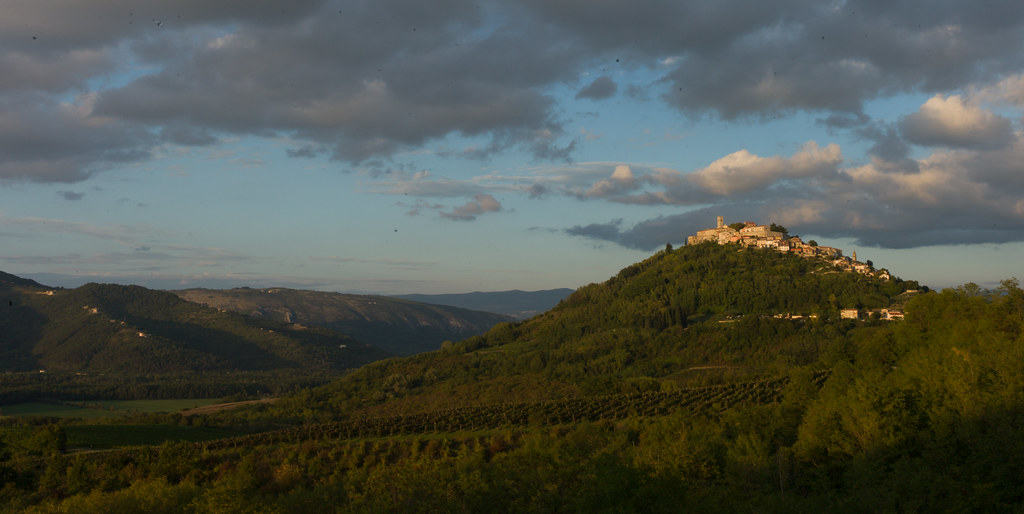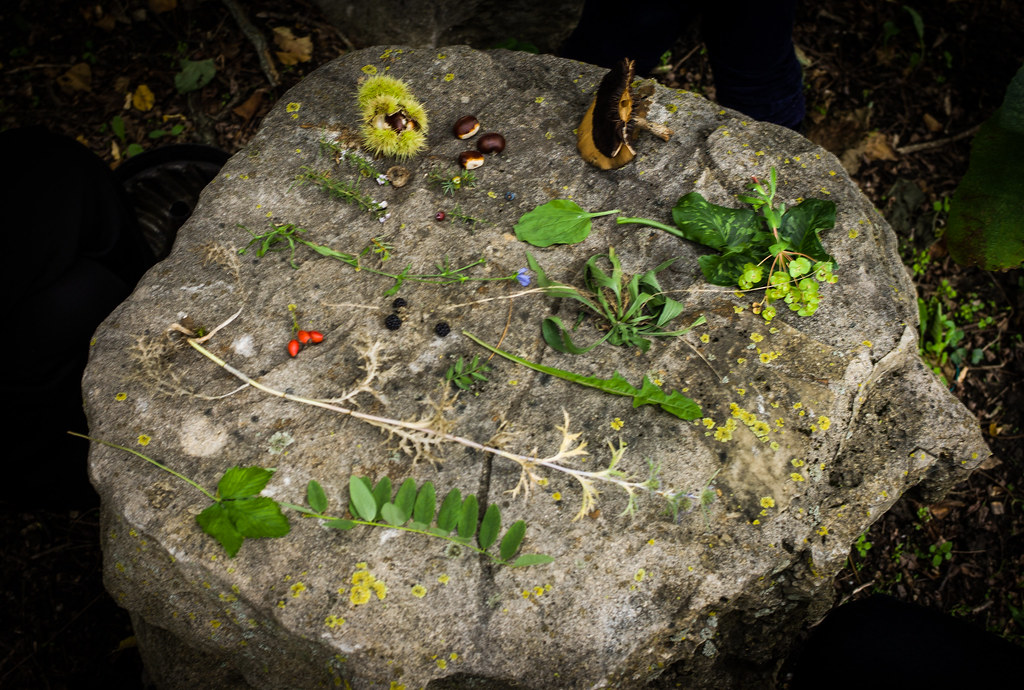This is an old revision of the document!
Parenzana Residency Notes
Notes during the residency at Castelletto Parenzana (on the former TPC train line) → http://fo.am/family-residency-sarah-neville/
Photos: https://secure.flickr.com/photos/foam/sets/72157636156644153/
From the 30th of September to the 9th of October 2013, Sarah Neville, Florence Thomas, Nik Gaffney and Maja Kuzmanovic inhabit the Castello Parenzana, close to the legendary town of Motovun in Istria, Croatia. Matt and Miranda Thomas take part in the residency as well, remotely from the Adelaide Hills. Although the landscape in Istrian and South Australian hills might share similarities of climate and topography, the flora and fauna, stories and cultures that grew from them are quite different. Inspired and informed by the landscape, the weather and the (hi)stories of both places, as well as our own experiences as inhabitants and migrants, we're looking into the relationships between storytelling and the environment, particularly when dealing with unpredictability, turbulence, 'uncontrollability', as well as full-blown natural disasters.
With warm thanks to Dorina Vlakancic, for her support and welcoming this residency to Castello Parenzana; Danica Kuzmanovic, for sharing her social network with us, helping with planning and logistics, as well as a wonderful moral support; Goran Kuzmanovic and his friends for allowing us to borrow an all-terrain pram, much needed for a well-travelled baby in residence!
Supported by the Flemish Authorities, the Culture 2007-2013 Framework of the European Commission and the Thomas family.
Notes from 20131002
<graphviz dot center> digraph 20131002 {
bgcolor = "grey93"; node [shape = doublecircle]; Stories Emotions Environment; node [shape = box]; Environment -> Uncertainty; Environment -> "Out of Control" -> Disasters -> Premonitions -> Adaptation; Environment -> Emotions; Environment -> Stories; "Growing out of links with the environment" -> Environment; Stories -> "Sense making" -> Environment; "Sense making" -> Visualisation; "Sense making" -> "Supernatural in a natural environment"; Stories -> "Contemporary Mythology" -> "Pop culture" -> "Everyday Life" -> "How people see things" -> "Stories people tell themselves" -> "Interviews/questionnaires?"; "Contemporary Mythology" -> "Science and technology"; Stories -> "Science Fiction" -> "Speculative Fiction" -> "Eco-disaster movies" -> Environment; "Science Fiction" -> "Science and technology"; Stories -> "Growing out of links with the environment" -> Culture; Stories -> Folk -> Myths -> Environment; Myths -> Creation Myths; Creation Myths -> "Footnotes, commentary"; Folk -> Wisdom -> Aphorisms Folk -> Superstitions -> "Old wives' tales" -> Emotions; Stories -> Emotions; Emotions -> Uncertainty; Emotions -> Fear; "Growing out of links with the environment" -> "What can be transported" -> "Legitimacy of a thread of Myths" -> "geography"; "Legitimacy of a thread of Myths" -> ?; "What can be transported" -> "EU - AU"; "What can be transported" -> "Continuity in the framing?"; "What can be transported" -> "footnotes, commentary"; "What can be transported" -> "Emotions" }
</graphviz>
Notes from 20131003
A few things to explore:
- reviewing documentation of the early beginnings of the project in Sweden and Australia
- Miranda: volcano is a rock with a hole in it, there is lava and you can die from it.
- “In the heat” - collapsibility of a body, fragility, no escape
- Dialogues (Domestic violence, Demeter & Persephone - harshness of content, gentleness of voices, related to natural and cultural disasters
- staging photos around the house with emerging characters (storyteller, the child…) and the environment
- vocal exercise working with keywords from local legends and/or emerging from the process
- Tasks for Matt: sound explorations responding to conceptual developments in Castelletto
- Tasks for Miranda: How does this story continue: “There once was a giant, who built a town on a hill…”

Questions to explore:
- How can stories be presented?
- What are people telling themselves?
- How can a story be dislocated and becoming something else?
- What stories are told to understand the weather (how do historical myths relate to contemporary ones, e.g. sci-fi movies about ecological disasters, where stories are only told when the weather becomes extreme… what happens to all the other stories about weather in daily life?
Creation myths in contrast to aphorisms and sayings about the weather and other natural phenomena, such as:
- the tribe escaping a tsunami by listening to an ancient myth and running up a mountain after recognising warning signs as predicted in the story
- Miranda's volcano story,
- the “red sunset” saying (in Italian: Rosso di sera - bel tempo si spera; rosso di mattina - pioggia si avvicina)
Aphorisms include a heuristic approach to the world, they deal with probabilities rather than dogmas. What happens to age old sayings that might be less in tune with current climate chaos (when red sunsets don't often mean nice weather…). Do we need new annotations or re-interpretations of these texts to reflect our time?
<graphviz dot center> digraph 20131003 {
bgcolor = "grey93"; node [shape = doublecircle]; Form Migration; node [shape = box]; Form -> "Australian Yarn" -> "A house" -> "In Adelaide Hills"; Form -> "A house in the hills" -> "Castelletto Parenzana" -> "Fairy Tales"; "A house" -> "A house in the hills"; "Castelletto Parenzana" -> "A railway that isn't there"; Form -> "Question of claim on cultural heritage" -> Migration -> "How you understand (new) surroundings" -> "Remembering landscapes left behind"; "How you understand (new) surroundings" -> "Hyperawareness of new / adopted landscapes"; Migration -> "Closing of borders" -> "Rise of nationalism and xenophobia"; Form -> Annotations -> "Re-interpretations of aphorisms about turbulent weather"; Form -> "Discarded stories" -> "Filmske Novosti Showreels" -> "Cemetery for unwanted stories" }
</graphviz>
Notes from 20131004
- Weather lore
- rain & mushrooms

edible and poisonous plants (notes at https://secure.flickr.com/photos/foam/10084237623/)

stories, storytelling and plant mythology
Myths and Natural Early Warning Systems
“Earthquakes bring vibrational changes on land and in water while storms cause electromagnetic changes in the atmosphere,” he said. “Some animals have acute sense of hearing and smell that allow them to determine something coming towards them long before humans might know that something is there.”
http://news.nationalgeographic.com/news/2005/01/0104_050104_tsunami_animals_2.html
Anthropologists had initially expected the aboriginal population of the Andaman Islands to be badly affected by the tsunami and even feared the already depopulated Onge tribe could have been wiped out. Many of the aboriginal tribes evacuated and suffered fewer casualties. Oral traditions developed from previous earthquakes helped the aboriginal tribes escape the tsunami. For example, the folklore of the Onges talks of “huge shaking of ground followed by high wall of water”. Almost all of the Onge people seemed to have survived the tsunami. https://en.wikipedia.org/wiki/2004_Indian_Ocean_earthquake_and_tsunami#Signs_and_warnings
The Storyteller and the child
OEmbed Error- Error sending request to provider: https://secure.flickr.com/photos/foam/10086807063/
- Provider returned HTTP Status 404 for
- All resolution methods failed
OEmbed Error
- Error sending request to provider: https://secure.flickr.com/photos/foam/10086807063/
- Provider returned HTTP Status 404 for
- All resolution methods failed
- Error sending request to provider: https://secure.flickr.com/photos/foam/10086685694/
- Provider returned HTTP Status 404 for
- All resolution methods failed
OEmbed Error
- Error sending request to provider: https://secure.flickr.com/photos/foam/10086807063/
- Provider returned HTTP Status 404 for
- All resolution methods failed
- Error sending request to provider: https://secure.flickr.com/photos/foam/10086685694/
- Provider returned HTTP Status 404 for
- All resolution methods failed
- Error sending request to provider: https://secure.flickr.com/photos/foam/10086692854/
- Provider returned HTTP Status 404 for
- All resolution methods failed
other…